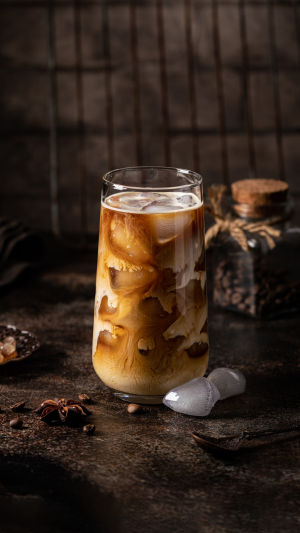Hello, Lykkers! Tea and coffee are not just beverages; they are rituals, comforts, and social catalysts that have shaped societies and cultures for centuries.
From the bustling tea markets of China to the aromatic coffee plantations of Ethiopia, these two drinks have traveled the world, each bringing with them a unique history and tradition.
Whether you prefer the soothing warmth of tea, with its rich array of flavors and calming effects, or the invigorating jolt of coffee, known for its robust taste and energizing properties, both drinks provide unique experiences and benefits that cater to a diverse range of tastes and lifestyles.
<h3>1. The Origins and Cultural Significance</h3>
<h3>- For Tea</h3>
<b>Origins:</b> Tea traces its roots back to ancient China, around 2737 BC. It's said that an emperor accidentally had some tea leaves blow into his pot of boiling water and then this discovery led to the practice of drinking tea.
<b>Cultural Significance:</b> In China, tea is a symbol of hospitality and tradition. In Japan, the tea ceremony (Chanoyu) is a spiritual and artistic practice. In Britain, afternoon tea is a beloved ritual, while in India, chai is a daily staple infused with spices.
<h3>- For Coffee</h3>
<b>Origins:</b> Coffee's history begins in Ethiopia, where legend has it that a goat herder named Kaldi discovered the energizing effects of coffee beans in the 9th century.
<b>Cultural Significance:</b> Coffeehouses have been centers of social interaction and intellectual exchange since they first appeared in the Middle East. Today, they are found worldwide, from Italy's bustling espresso shops to America's ubiquitous coffee chains.
<h3>2. Brewing Methods and Varieties</h3>
<h3>- For Tea</h3>
<b>Brewing Methods:</b>
<b>Loose Leaf:</b> Preferred for its richer flavor, steeped in a teapot or an infuser.
<b>Tea Bags:</b> Convenient and popular, perfect for a quick cup.
<b>Gongfu Tea:</b> A traditional Chinese method involving multiple short steeps.
<h3>Varieties:</h3>
<b>Black Tea:</b> Strong and robust, often enjoyed with milk and sugar.
<b>Green Tea:</b> Fresh and grassy, known for its health benefits.
<b>Oolong Tea:</b> Semi-oxidized, offering a balance between black and green tea.
<b>Herbal Tea:</b> Caffeine-free and made from a variety of plants and herbs.
<h3>- For Coffee</h3>
<b>Brewing Methods:</b>
<b>Espresso:</b> A concentrated shot of coffee, the base for many drinks like lattes and cappuccinos.
<b>Drip Coffee:</b> Common in households, where hot water drips through ground coffee.
<b>French Press:</b> Immerses coffee grounds in water before pressing them out.
<b>Cold Brew:</b> Steeping coffee grounds in cold water for an extended period, resulting in a smooth, less acidic drink.
<b>Varieties:</b>
<b>Arabica:</b> Smooth and sweet, with a high sugar content.
<b>Robusta:</b> Strong and bitter, with higher caffeine content.
<b>Specialty Coffees:</b> Unique blends and single-origin beans with distinct flavors.
<h3>3. Health Benefits and Considerations</h3>
<h3>- For Tea</h3>
<b>Health Benefits:</b>
Rich in antioxidants, which help reduce inflammation and promote overall health.
Green tea is known for its potential to aid weight loss and improve brain function.
Herbal teas can provide a range of benefits, from calming effects (chamomile) to digestive aid (peppermint).
<b>Considerations:</b>
Overconsumption of caffeinated tea can lead to anxiety and sleep disturbances.
Tannins in tea may interfere with iron absorption if consumed in large quantities.
<h3>- For Coffee</h3>
<b>Health Benefits:</b>
Contains essential nutrients like vitamins B2, B3, and B5, manganese, and potassium.
May enhance physical performance and improve cognitive function.
Linked to a lower risk of several diseases, including Parkinson's disease, Alzheimer's disease, and certain cancers.
<b>Considerations:</b>
Excessive coffee consumption can lead to jitteriness, anxiety, and digestive issues.
High caffeine intake may disrupt sleep patterns.
<h3>4. Everyday Scenarios and Preferences</h3>
<h3>- For Tea</h3>
<b>Morning Ritual:</b> A cup of black tea to start the day with a gentle boost.
<b>Afternoon Break:</b> Green tea is a good choice for refreshing but not too stimulating.
<b>Evening Relaxation:</b> A soothing herbal tea, like chamomile, to wind down before bed.
<b>Social Gathering:</b> Serving tea during a casual get-together or a formal tea party, fostering conversation and connection.
<h3>- For Coffee</h3>
<b>Morning Kickstart:</b> An espresso shot to jumpstart the day with a burst of energy.
<b>Work Companion:</b> A cup of drip coffee to stay focused and productive.
<b>Social Interaction:</b> Meeting friends at a coffeehouse for a latte or cappuccino.
<b>Creative Fuel:</b> Sipping a cold brew while brainstorming ideas or working on a project.
<h3>Conclusion</h3>
Tea and coffee, while different in taste and tradition, share a universal appeal that transcends cultures and borders. They are more than just drinks; they are experiences that comfort, energize, and bring people together. Whether you lean towards the calming embrace of tea or the stimulating kick of coffee, both beverages offer a world of flavors and benefits to explore. So, Lykkers, take a moment, brew your favorite, and savor the rich history and culture in every sip. Cheers to enjoying the best of both worlds!.
Coffee vs. Tea
Video by Greg and Mitch





